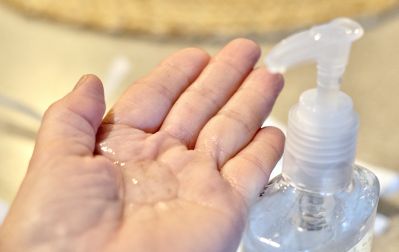Pox viruses can be transmitted not only through direct contact with body fluids, but also via contaminated hands. “To prevent the spread of monkeypox, good hand hygiene is therefore essential,” points out lead author Dr. Toni Meister, of the Department of Molecular & Medical Virology and the faculty of medicine at Ruhr University Bochum.
To test the effectiveness of the disinfectants recommended by the WHO, the researchers brought the viruses into contact with one of the recommended WHO formulations as well as with their main components ethanol and isopropanol individually. After an exposure time of 30 seconds, they determined the number of virus particles that were still infectious compared to the baseline value. “We could show that both WHO disinfectants sufficiently inactivate the virus,” says professor Eike Steinmann, of the Department of Molecular & Medical Virology and the faculty of medicine at Ruhr University Bochum.
Since most commercial disinfectants also contain ethanol or isopropanol, they should also inactivate the virus. “The critical factor is the concentration of the ingredients, but you can usually read this on the packaging,” says Meister. “Disinfectants containing 40 to 60 per cent ethanol by volume or 40 percent isopropanol or more are effective against monkeypox.”
WHO-recommended disinfectant I consists of 80 percent ethanol by volume, 1.45 percent glycerol by volume and 0.125 percent hydrogen peroxide by volume. Disinfectant II consists of 75 percent by volume isopropanol, 1.45 percent by volume glycerol and 0.125 percent by volume hydrogen peroxide.
Reference: Toni Meister, Ronny Tao, Yannick Brüggemann, Daniel Todt, Jörg Steinmann, Jörg Timm, Ingo Drexler, Eike Steinmann: Efficient inactivation of monkeypox virus by WHO recommended hand rub formulations and alcohols, in: Emerging Infectious Diseases, 2022: DOI: 10.3201/eid2901.221429
Source: Ruhr University Bochum
